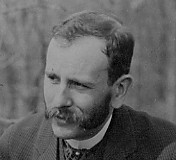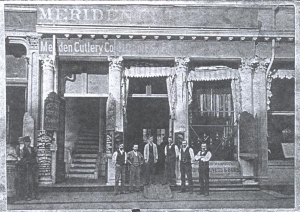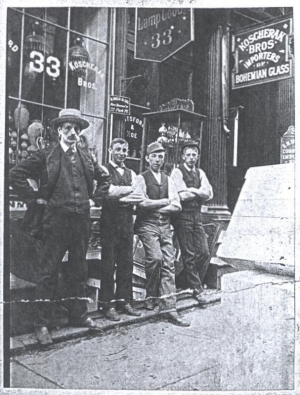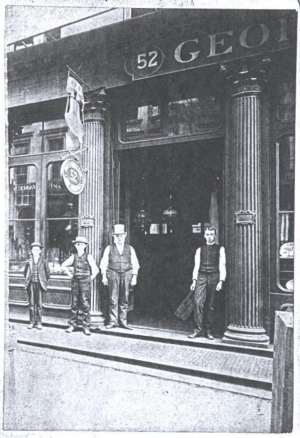Only ten years old when his father died, William R. Noe was quite attached to his family, his church and a wide circle of friends. He was fond of writing doggerel verse, poking gentle fun at his relatives and friends. He was also quite fond of the city of Newark, New Jersey. He married Fannie Bennett in June 1879 in Woodside, New Jersey (Woodside is an old name for North Newark). Two of William R. Noe's sons, Charles Eugene Noe and Harold Cooper Noe, attended Newark Academy. William R. Noe built a large home on Prospect Street in East Orange, New Jersey. In the late 1930s or early 1940s, the house was deeded over to Upsula College as a dormitory as it adjoined the college campus. Upsula College is no longer in existence; it went out of business in the mid- or late 1990s.
As a young man during the 1870's, William R. Noe worked as a salesman for Holmes, Booth & Haydens, dealers in brass and lamp goods, at 49 Chambers Street, New York City. One of the items he kept was a Holmes, Booth & Haydens' Price List of Kerosene burners and Lamp trimmings, dated September 24, 1878. A scarce piece of ephemera indeed. Some of the burners included are the No. 00 Ne Plus Ultra for 90 cents per dozen, the No. 2 Richmond Burner at $3.50 per dozen, and Star Burners for 80 cents a dozen and packed 50 dozen per case! Prices for packing varied between one and two cents per dozen - imagine that! William R. Noe obtained two patents in 1885 and 1886 that were assigned to H.B.&H., see the patent table in Part II for details.
In a printed letter dated January 1, 1910 and sent to his customers, William R. Noe writes: "I take pleasure in announcing the above new style for my business [referring to a new logo]. It means that my sons, William Robert, Jr., and Charles Eugene, who have been associated with me, are now my partners. The trade, by their continued and enlarged patronage, have evidenced their appreciation of my new lines and methods of business, compelling an increase of my facilities to serve their wants."
The lamp business continued under the same name after William R. Noe's death in May 1920. Throughout the 1910's and 1920's the firm appeared to be quite healthy. In 1927, the firm's balance sheet listed assets and liabilities at $685,610.63. The company opened the Brooklyn manufacturing plant at 231 Willoughby Street in 1930. The company's office and showrooms were part of the mezzanine floor at 1 Park Avenue. The business survived the initial years of the Great Depression but filed for bankruptcy reorganization in 1935. It failed sometime in the late 1930's. Harold C. Noe joined Mutual Sunset Lamp after the failure of William R. Noe & Sons. That association apparently did not last long. In 1940, he got a job through a college connection at Silver Springs Salt Company in Silver Springs, NY. In 1943, he went to work for Walter Kidde & Co. After 18 years, he retired in 1961 as vice president of the Kidde Textile Machinery Company Division of Walter Kidde & Co., located in Bloomfield, NJ. He did some consulting on manufacturing issues for Kidde after his retirement. Harold died in July of 1968. It is uncertain if William R. Noe, Jr. ever worked after the dissolution of the lamp company. His wife, Anna Liebert Noe, was apparently quite wealthy and they had no children. By 1940, William, Jr. was 60 years and ready for retirement. There wasn't much a financial incentive or need to find other work. He died in October of 1959. Charles Eugene Noe moved to Boston and worked as a salesman for Sterling Drug Co. He retired to Oak Park, Illinois to be near his only child, a daughter who had married and relocated there. He died in March of 1970. 
William R. Noe's signature as it appears on a document
dated November 24, 1886, typed on Holmes, Booth & Haydens' letterhead, trying to sell the patent for his medicine spoon to one Mr. G.T. Williamson of Newark, New Jersey. References
|
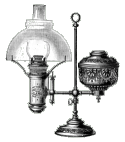
| Reference Desk | Lamp Information | Other Resources | On-Line Shopping |

Purveyors of Antique Lighting and Accessories
435 Main Street
 Hurleyville, New York 12747
Hurleyville, New York 12747
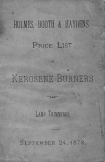
The Holmes, Booth & Haydens price list, dated September 24, 1878, that belonged to W.R. Noe.
[click here to enlarge]
the man and his company - part I

William R. Noe
^ Top of Page
Privacy Policy | Terms and Conditions of Use | Announcements
Copyright © 2001-2011 ~ Daniel Edminster | The Lampworks ~ All Rights Reserved
